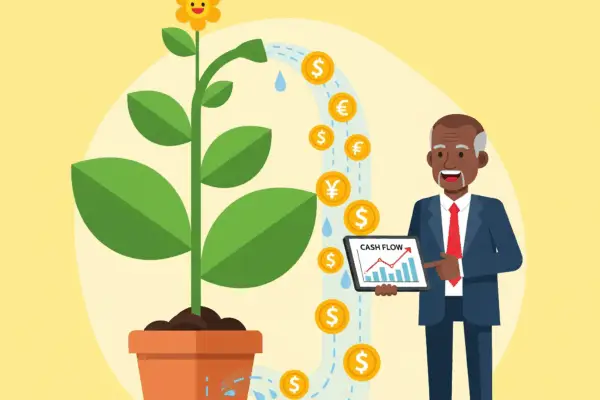Ah, the hum of the engine, the thrill of the open road, the boundless horizon of opportunity… that’s what it feels like to dive into the world of small business. It’s not just about making money; it’s about making a mark, building something from the ground up, and transforming a whisper of an idea into a roaring success. I’ve seen countless entrepreneurs, from the garage dreamers to the corner store legends, unlock their potential. And trust me, the path, while challenging, is also incredibly rewarding. If you’re reading this, you’re likely on the cusp of, or deep within, that very journey. You’re looking for insights, for guidance, for that secret sauce that turns ambition into achievement. Well, pull up a chair, because we’re about to lay out the blueprint.
The world of small business is not for the faint of heart, but it is unequivocally for the brave, the innovative, and the persistent. It’s a landscape teeming with possibility, but also with pitfalls. My goal today is to equip you with the knowledge, the strategies, and the mindset to navigate this terrain not just successfully, but triumphantly. We’re talking about practical, actionable steps that can transform your entrepreneurial vision into a thriving enterprise, one that not only sustains you but also empowers your community and fulfills your deepest professional aspirations.
The first, and perhaps most critical, element to master in the small business arena isn’t a complex marketing strategy or a groundbreaking product. It’s *you*. It’s your mindset. Think of yourself as the CEO of your own destiny, and like any great CEO, you need a powerful internal operating system. This means cultivating resilience, a relentless problem-solving attitude, and an insatiable appetite for learning. The entrepreneurial journey is a marathon, not a sprint, and there will be days when the winds are against you. On those days, your internal fortitude will be your most valuable asset. It’s about viewing challenges not as roadblocks, but as puzzles to be solved, as opportunities to pivot, innovate, and grow. Every setback is simply a lesson in disguise, a chance to refine your approach and emerge stronger. Embrace the unknown, be comfortable with discomfort, and understand that failure is not the opposite of success; it’s a stepping stone on the path to it. This foundation of character and mindset is what truly differentiates a dream from a reality in the small business world.
Now, let’s talk about the genesis of every successful small business: the idea. But not just any idea. A *validated* idea. Far too many aspiring entrepreneurs fall in love with a concept in a vacuum, only to discover later that the market isn’t interested. Your idea should ideally solve a problem, fill a void, or offer a superior alternative to an existing solution. This isn’t about reinventing the wheel, necessarily, but about making the wheel spin faster, smoother, or in a direction no one else thought of. How do you find this magical idea? Start with your own frustrations, your own passions, or the complaints you hear from others. What makes you say, “There *has* to be a better way”? That “better way” could be your golden ticket.
Once you have a glimmer, a spark of an idea, the next crucial step is validation. This isn’t about guesswork; it’s about data. Dive into market research. Who is your target customer? What are their demographics, their psychographics, their pain points? Talk to potential customers. Conduct surveys, hold informal interviews, and pay attention to online forums and social media conversations. Listen more than you speak. Are people actively searching for solutions like yours? Are they willing to pay for them? What are your potential competitors doing? Analyze their strengths, their weaknesses, and identify your unique selling proposition (USP). What makes *your* small business distinct? Why should customers choose you over everyone else? This isn’t just about price; it’s about value, experience, quality, and connection. Think about a minimum viable product (MVP) – the simplest version of your offering that delivers core value. Launch it, gather feedback, and iterate. Don’t wait for perfection; iterate towards it. This lean approach saves time, resources, and prevents you from building something no one wants.
With a validated idea and a burning passion, it’s time to lay the legal and financial groundwork for your small business. This part might not be as glamorous as brainstorming, but it’s absolutely non-negotiable for long-term success and peace of mind. First, choose your business structure. Are you operating as a sole proprietorship, a partnership, a limited liability company (LLC), or perhaps an S-corporation? Each has different implications for liability, taxation, and administrative burden. Consult with a legal professional and an accountant to understand which structure best suits your specific small business goals and risk tolerance. This isn’t a one-size-fits-all decision, and getting it right from the start can save you headaches and money down the line.
Next, handle the bureaucratic essentials. This includes registering your business name, obtaining any necessary federal, state, or local licenses and permits, and securing an Employer Identification Number (EIN) from the IRS if you plan to hire employees or operate as a corporation/LLC. Neglecting these details can lead to fines, legal issues, and a very shaky foundation for your small business. Think of it as building code for your entrepreneurial structure; you wouldn’t build a house without adhering to code, and your business deserves the same diligent approach.
Financially, the first commandment for any small business owner is to separate your personal and business finances. This is fundamental for accurate accounting, tax preparation, and understanding the true financial health of your venture. Open a dedicated business bank account and consider a business credit card. Implement a robust accounting system from day one. Whether it’s a simple spreadsheet initially or a cloud-based software like QuickBooks or Xero, track every penny coming in and going out. Understand your revenue, your expenses, your profit margins. Cash flow is the oxygen of any small business; without it, even a profitable business can suffocate. Learn to read your financial statements: the Profit & Loss (P&L) statement tells you about your income and expenses over a period, the Balance Sheet shows your assets, liabilities, and equity at a specific point in time, and the Cash Flow Statement details the movement of cash. These aren’t just arcane documents; they are your small business’s health report.
Funding is another critical consideration. Many small businesses start with bootstrapping – self-funding through personal savings, or reinvesting initial profits. This is often the leanest and most effective way to start, as it forces discipline and creativity. However, as you grow, you might explore other avenues: small business loans from banks or credit unions, lines of credit, government grants (though these are often competitive and specific), or even angel investors or venture capitalists if your small business has significant scalability potential. Each option has its pros and cons, and understanding them will empower you to make informed decisions that fuel your growth without undue risk.
Once the foundations are set, it’s time to focus on your core offering: your product or service. Refining your offering isn’t a one-time event; it’s an ongoing process of improvement based on customer feedback and market trends. What makes your offering truly exceptional? What problem does it solve in a way no one else can? This ties directly back to your Unique Selling Proposition (USP). For a small business, a strong USP is not a luxury; it’s a necessity. It’s what cuts through the noise and resonates with your ideal customer.
Hand-in-hand with your offering is your brand. Your brand is more than just a logo or a catchy slogan; it’s the sum total of every interaction a customer has with your small business. It’s your personality, your values, your promise. It’s the feeling people get when they think of you. Invest time in defining your brand identity: your mission, vision, values, target audience, brand voice, and visual elements. Consistent branding builds trust and recognition. It makes you memorable. Think about what emotions you want to evoke. Is your small business about innovation and speed, or trustworthiness and tradition? Authenticity is key here. Customers, especially those engaging with small businesses, are increasingly looking for genuine connections and stories they can believe in.
Now, let’s talk about the engine that drives revenue: marketing and sales. Without effective marketing, even the most brilliant small business idea remains a well-kept secret. Without effective sales, potential interest never converts into revenue. This is where you tell your story, connect with your audience, and guide them towards becoming loyal customers.
In today’s digital age, a strong online presence is non-negotiable for almost every small business. Start with a professional website. This is your digital storefront, your 24/7 salesperson. It should be easy to navigate, mobile-responsive, clearly communicate your value proposition, and have a clear call to action. Search Engine Optimization (SEO) is crucial for visibility. This means optimizing your website content, structure, and technical aspects so that search engines like Google can find and rank your small business higher for relevant keywords. It’s a long-term strategy, but incredibly powerful for organic traffic.
Social media is another powerhouse for small businesses. Don’t try to be everywhere; choose the platforms where your target audience spends their time. Whether it’s Instagram for visuals, LinkedIn for B2B, Facebook for community building, or TikTok for engaging short-form video, tailor your content to the platform and your audience. Engage authentically, share valuable content, and build a community around your brand. It’s not just about selling; it’s about building relationships and trust.
Email marketing remains one of the highest ROI marketing channels for small businesses. Build an email list by offering valuable incentives (e-books, discounts, exclusive content). Then, nurture those leads with regular, relevant emails that provide value, share updates, and occasionally promote your offerings. It’s a direct line to your most engaged audience.
Content marketing – creating and distributing valuable, relevant, and consistent content to attract and retain a clearly defined audience – is a long-game strategy that pays huge dividends for small businesses. This could be blog posts, videos, podcasts, infographics, or case studies. The goal is to establish yourself as an authority in your niche, answer your customers’ questions, and build brand loyalty. When you provide value upfront, you earn trust, and trusted brands are chosen brands.
While digital marketing is powerful, don’t overlook traditional methods, especially for local small businesses. Networking events, local sponsorships, community involvement, and even old-fashioned word-of-mouth (supercharged by excellent customer service) can be incredibly effective. The best marketing strategy for a small business is often a blend of digital and traditional, tailored to your specific market and audience.
Sales, then, is the natural progression. It’s about understanding your customer’s needs, articulating how your small business can meet those needs, and guiding them through the purchase process. It’s not about being pushy; it’s about being helpful. Excellent customer service isn’t just a department; it’s a philosophy that permeates every aspect of your small business. Happy customers become repeat customers, and, critically, they become brand advocates, spreading positive word-of-mouth that is priceless. Build strong relationships, go the extra mile, and always aim to exceed expectations.
As your small business grows, you’ll need to master operations and management. This is about making your business run like a well-oiled machine, efficiently delivering your product or service without you having to be involved in every single minute detail. The key here is developing systems and processes. Document your procedures for everything from customer onboarding to order fulfillment to social media posting. When you standardize processes, you increase efficiency, reduce errors, and make it easier to delegate tasks as your small business expands. Think about automation tools for repetitive tasks, whether it’s email scheduling, accounting software, or inventory management systems. Every minute saved through automation is a minute you can reinvest in growth.
Eventually, you’ll likely need to build a team. Hiring is one of the most impactful decisions you’ll make as a small business owner. Look for individuals who not only have the necessary skills but also align with your company culture and values. Empower your team, delegate effectively, and foster an environment where everyone feels valued and motivated to contribute to the small business’s success. Your employees are your greatest asset; treat them as such. Invest in their training and development, and create a positive, supportive work environment. A strong team can propel your small business to new heights, freeing you from the day-to-day grind to focus on strategic vision.
For product-based small businesses, effective inventory and supply chain management are paramount. This involves optimizing purchasing, storage, and fulfillment to minimize costs while ensuring product availability. Understanding demand forecasting, managing supplier relationships, and navigating logistics are crucial for maintaining profitability and customer satisfaction. Even service-based businesses have their own operational challenges, such as scheduling, client management, and ensuring consistent service quality.
Time management for the small business owner is a beast of its own. You wear many hats, often simultaneously. Prioritization is key. Identify the 20% of activities that yield 80% of your results and focus your energy there. Learn to say no to distractions, batch similar tasks, and protect your most productive hours for deep work. Remember, working *on* your business (strategy, vision, growth) is as important, if not more important, than working *in* your business (day-to-day operations).
Financial management transcends just bookkeeping; it’s about strategic planning. Cash flow management is critical. Understand your burn rate and your runway. Even if you’re profitable on paper, if cash isn’t coming in fast enough to cover expenses, you’re in trouble. Develop accurate pricing strategies that reflect your costs, desired profit margins, and market value. Don’t underprice your value, but also stay competitive. Regularly review your Profit & Loss statements to identify areas of high cost or low revenue. Can you optimize expenses? Are there opportunities to increase average transaction value? Reinvestment of profits back into your small business is essential for sustainable growth, whether it’s for new equipment, marketing campaigns, or talent acquisition. This isn’t just about survival; it’s about building a robust engine for future expansion.
Scaling your small business presents a unique set of challenges and opportunities. What worked for a one-person operation might not work for a team of ten. Scaling requires clear processes, efficient systems, and often, more sophisticated financial management. It’s about replicating success, not just adding more work. It’s a thrilling phase where your initial vision truly begins to blossom into something larger than yourself. But it demands strategic thinking, a willingness to adapt, and often, tough decisions about what to keep, what to outsource, and what to let go of.
Finally, let’s talk about risk management and adaptability. The business landscape is constantly evolving, and for a small business, being agile is a superpower. Understand the risks inherent in your industry: market shifts, economic downturns, technological disruptions, competitive pressures. While you can’t eliminate all risks, you can mitigate many of them. This means having appropriate insurance coverage (general liability, property, professional liability, etc.), understanding legal compliance, and having contingency plans for worst-case scenarios. What if a key supplier goes out of business? What if a major customer leaves? Thinking through these possibilities allows you to build a more resilient small business.
Perhaps the greatest risk in the small business world is stagnation. The market doesn’t wait for anyone. Embrace continuous learning and innovation. Stay abreast of industry trends, customer preferences, and new technologies. Be willing to experiment, to pivot, and to reinvent aspects of your small business when necessary. The businesses that thrive long-term are those that are not only excellent at what they do today but are also constantly evolving to meet the demands of tomorrow. This means fostering a culture of curiosity and flexibility within your small business, no matter its size.
And amidst all this talk of strategy, finance, and operations, let’s not forget the human element. Entrepreneurship can be an isolating journey. Build a strong support network of mentors, advisors, and fellow small business owners. Share your challenges, celebrate your wins, and learn from others’ experiences. Prioritize your well-being. Burnout is a real threat, and a tired, stressed-out leader cannot effectively steer a small business. Find ways to integrate work and life that sustain your energy and passion. This might mean setting clear boundaries, delegating more, or simply scheduling time for rest and rejuvenation. Remember why you started this small business in the first place, and let that passion fuel you.
Your small business isn’t just a venture; it’s a legacy in the making. It’s an opportunity to create jobs, contribute to your local economy, and solve real problems for real people. It’s a chance to build something that reflects your values and makes a positive impact.
The journey of building a small business is an epic one. It’s filled with highs and lows, triumphs and lessons, moments of sheer brilliance and moments of profound doubt. But for those who embrace the challenge with open arms, with a sharp mind, and with an unyielding spirit, the rewards are immeasurable. You’re not just building a business; you’re building a life, a future, and a testament to your own audacious vision. So, go forth, armed with knowledge, driven by passion, and ready to carve your own remarkable path in the world of small business. The road is open, and your adventure awaits.



